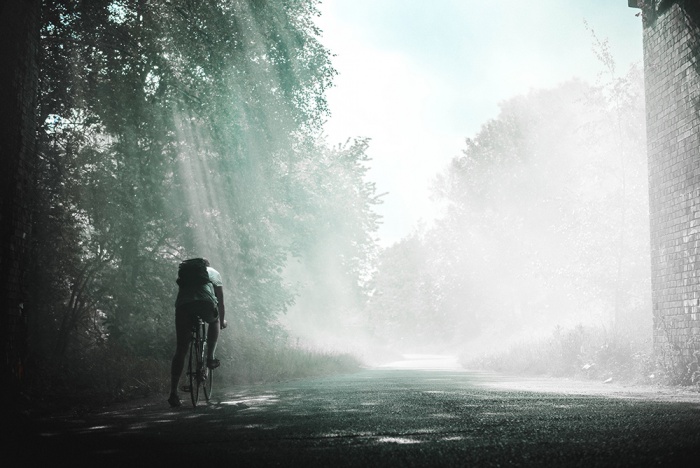Biking to work continues to climb in popularity. Our car-centric contributor decided to try it for a week.
Commuting by bike grew 63 percent in the United States between 2000 and 2013. Cities across the country continue to invest in infrastructure that incentivizes people to ditch cars in favor of two wheels.

Plus, people who bike to work have lower rates of cancer and heart disease than the general population. And they tend to be less stressed-out at work.
I decided to spend a week biking to and from my office, despite having no previous experience riding a bike beyond recreation.
I went from a strict regimen of drinking beer and sitting on my behind, to biking daily. Here’s what I learned.
Day 1: Thank God I Worked Up To This
I decided to go about this bike-to-work endeavor at a time when my physical fitness was closer to Chris Farley than Chris Froome. So I spent a week prepping my legs for what was ahead.

The route to and from my office is 16 miles through the hilly landscape of North County San Diego. My bike, the new Cannondale Bad Boy 1, is a bit more heavy-duty than a road bike.
For the week prior to giving up automobile transportation, I’d come home and log at least 12 miles in the saddle. This gave me a feel for riding the local topography and the cadence of the new bike.
This was a blessing. It eliminated nervous jitters for my Monday morning initial ride and made the first day, with its notable prolonged climb, not overly hellish.
Day 2: Find A Better Route

While day one didn’t feel too bad, the morning of day two my legs felt like jello. Partly because I foolishly biked for speed the day before, but also because I wasn’t routing intelligently.
I used Google Maps to plan my route. But after my initial ride, I noticed it led me up a painfully steep climb that seemed to be unnecessary.
I spent some time after the first day driving through the streets leading to my office.
As I expected, the path Google took me on was inefficient. While the route I planned out on my own was nominally longer, it had a small back road that reduced the elevation changes on the ride considerably.
Day 3: Lessen Your Load
Hauling a backpack with my lunch, laptop, work materials, and a change of clothes was a hassle. To counteract this, I came home and packed up all of the essentials I needed for the week of work, including lunches and clothes for Wednesday, Thursday, and Friday.
After arriving home Tuesday, I drove back to work and dropped off the care package at the office.
While I needed to keep my laptop on my person at all times, the difference between riding with only a lightweight laptop on my back versus all the other essentials was massive.
Day 4: Find Your Flow

As I mentioned, I stupidly decided to see just how fast I could ride the route to work on my first day. I’m too competitive and have the attention span of a goldfish.
Though many outdoor enthusiasts have the natural inclination to push performance, doing so during the first week of bike commuting is masochistic.
Instead, try and chill out while riding your bike. Focus on the calming rhythm of each pedal stroke, breathe in the scenery, enjoy the feeling of morning sunshine on your face.
There’s a slew of research supporting daily meditation and relaxation breaks. Focus on having fun during your ride and you will be happier when you get to the office.
Day 5: Reward Yourself
By the fifth day logging the 16 miles, I was sore and walking around the office like I was on stilts. So on the last day, I really took my time — I broke up my morning and evening commute into two legs, stopping at a hole-in-the-wall deli on the way. And I made a pit stop at a local watering hole during my return.
Did those brief respites make some marked difference in how my legs felt at the end of the week? Not at all.
But it’s easier to coax your sore frame back onto a bike if you know the light at the end of the cycling tunnel is a breakfast burrito or a cold beer.







